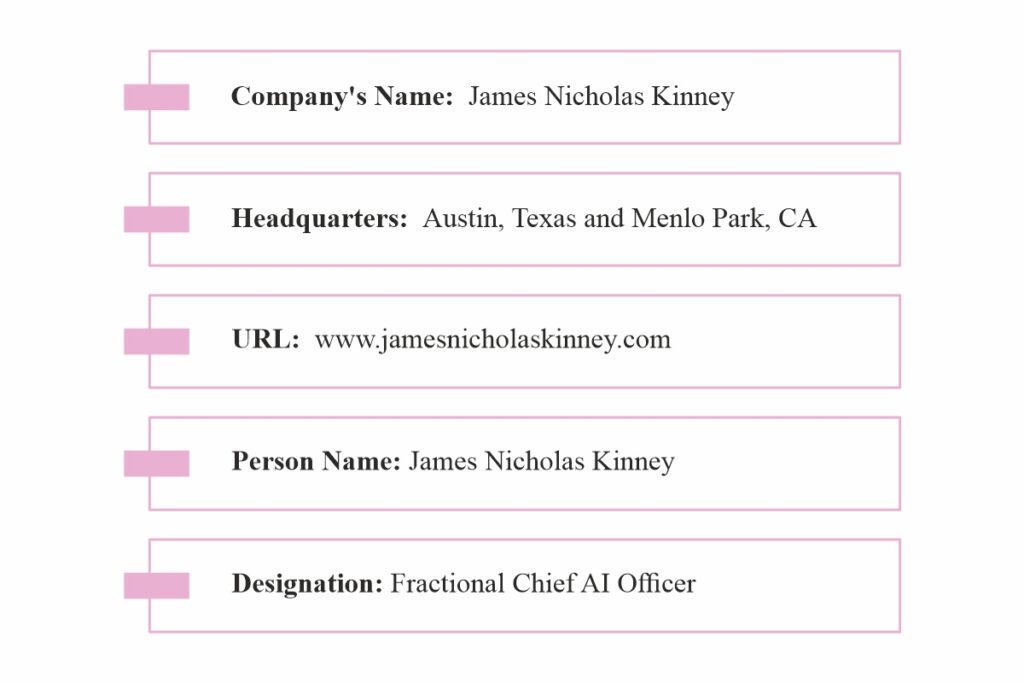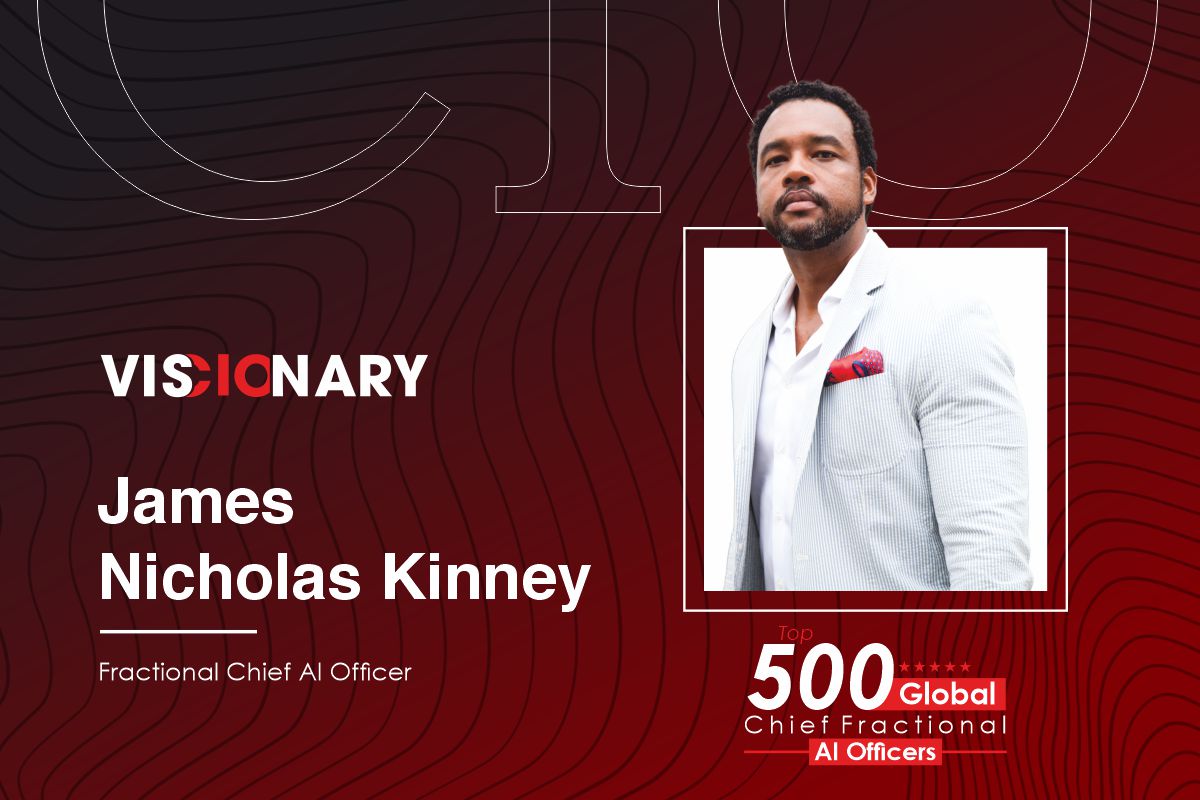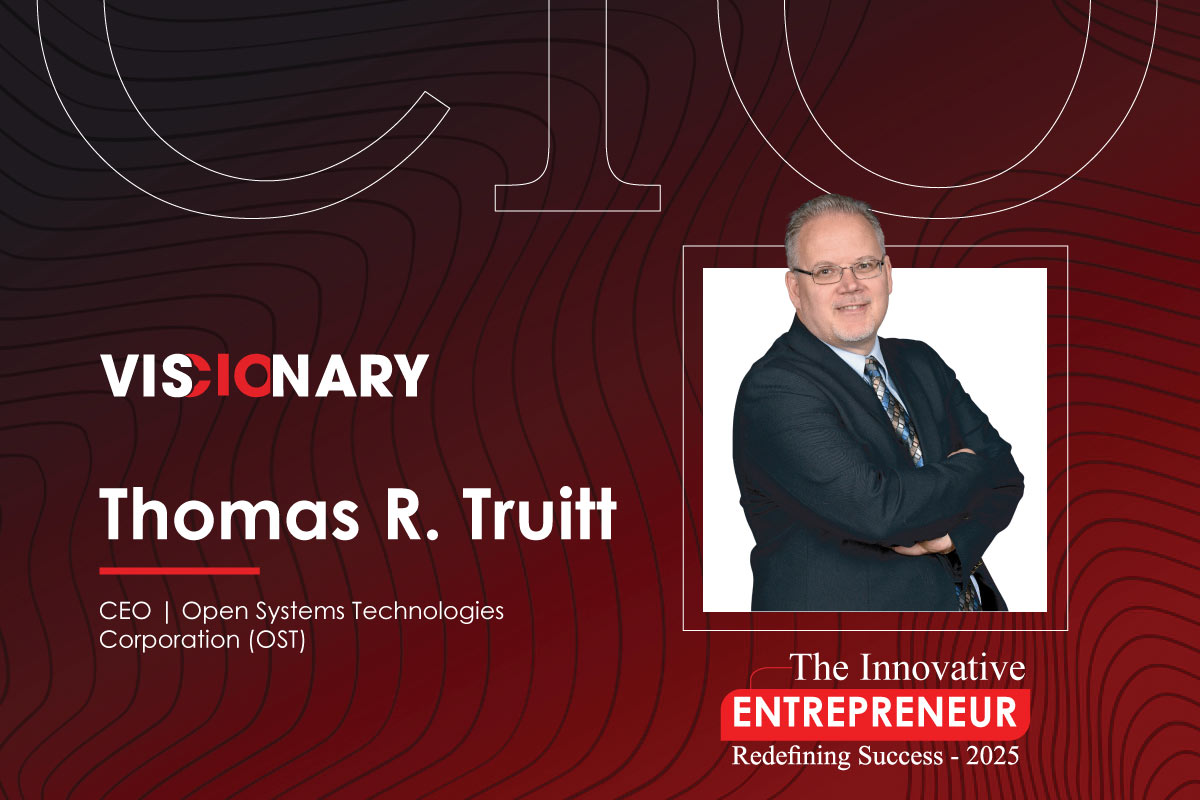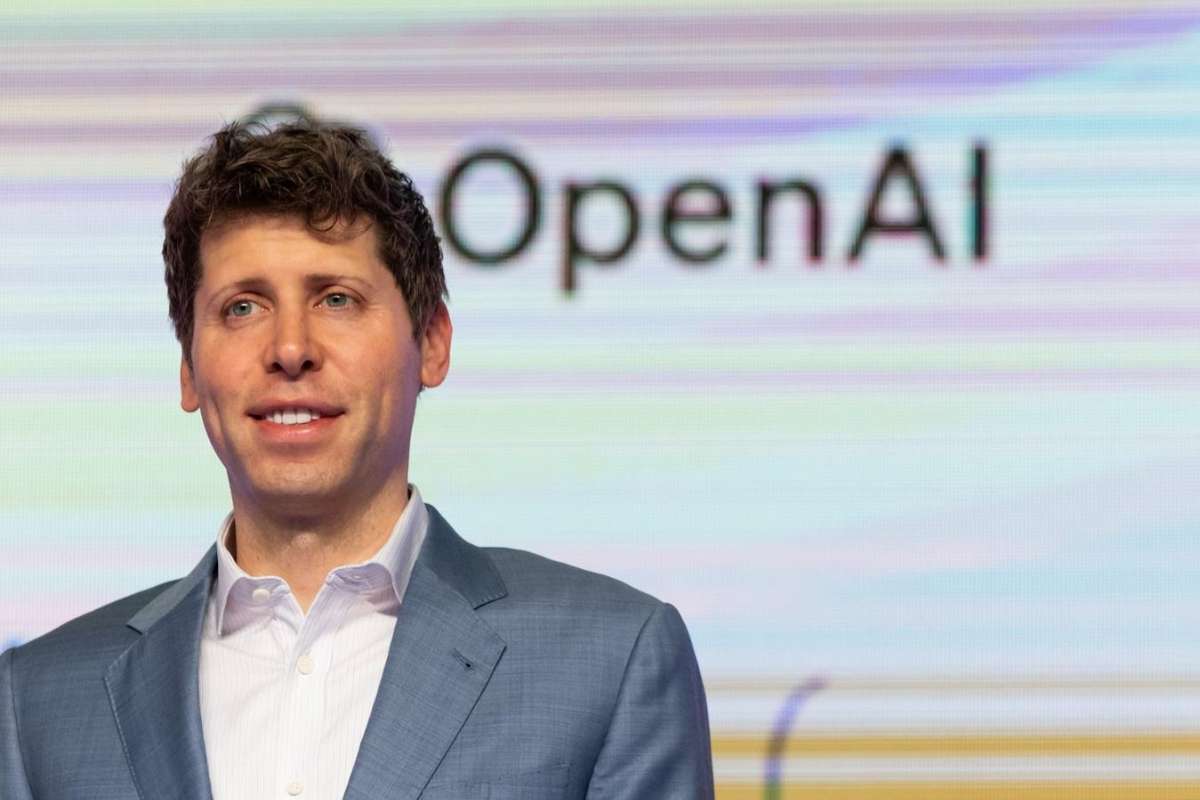Artificial Intelligence (AI) is rapidly reshaping the government and private sectors, driving efficiency, enhancing decision-making, and fostering innovation. From optimizing public services and improving delivery to automating business processes and refining customer experiences, AI is making a tangible impact across industries. However, to fully capitalize on these advancements, organizations require strong leadership to guide AI integration in ways that align with their goals and values. Leaders who understand technology and human behavior play a key role in ensuring AI solutions are used effectively to solve organizational challenges, boost productivity, and promote ethical practices. By bridging the gap between technology, culture, and business objectives, they help organizations unlock AI’s true potential, paving the way for smarter, more efficient operations.
James Nicholas Kinney combines his expertise in AI and human behavior to align AI strategies with organizational goals, ensuring the seamless integration of people, culture, and technology. He has driven impactful results saving a school district millions in energy costs and a global company months and hundreds of thousands in salary costs through AI optimization and data visualization. James’s approach is centered on starting with manageable projects that drive measurable ROI and scalable growth, all while prioritizing efficiency and enhancing workplace experiences. Through this strategic and thoughtful approach, he ensures that AI is not just a tool but a powerful driver of positive change within organizations.
The Spark of Curiosity
Having spent most of his career as a Global Chief People Officer, James Nicholas Kinney developed an interest in AI while researching chatbots for mental health for his book, AI and Mental Health: Two Waves That Will Change Us All. Fascinated by the impact of AI on people and workplaces, he furthered his education by earning a certificate in AI business strategy from MIT, studying Python at Harvard, and completing Wharton’s AI Future Program, led by LinkedIn Founder Reid Hoffman. With his combined expertise in people and AI, James brings a unique perspective to the intersection of technology and human behavior.
A Catalyst for Organizational Growth and Efficiency
James sees AI as a force for progress, not a threat. With experience leading over 30,000 employees throughout his career, he understands the transformative impact AI can have on productivity and efficiency. He points out that many organizations accumulate massive amounts of data—often stored in terabytes or even petabytes—but fail to utilize it effectively. AI has the power to change that by extracting meaningful insights, automating processes, and optimizing decision-making. By leveraging AI, businesses and institutions can turn dormant data into a dynamic asset, driving innovation, improving operations, and unlocking new growth opportunities.
Bridging Technology and Human Behavior
James Nicholas Kinney, an expert in human behavior and workplace dynamics, highlights the critical role of understanding people when integrating AI into organizations. Recognized as the Ad Industry’s therapist by Ad Age in 2023, he stresses that AI is not just about automation; it’s about how it transforms workplaces, decision-making, and human interactions. For AI to truly drive progress, leaders must go beyond the technology itself and focus on its behavioral, psychological, and cultural impacts.
He identifies fear as a key challenge in AI adoption, as people often fear what they don’t fully understand. James advocates for clear communication and a thoughtful approach to integration, where AI’s role and benefits are defined and communicated to every team member. By addressing concerns and fostering understanding, businesses can ensure AI is viewed as a tool for collaboration and growth rather than a threat to existing workflows.
Revolutionizing Business
Currently, several industries are leading the way in AI adoption due to the transformative potential AI holds. Healthcare stands out as one of the most promising sectors, where AI is revolutionizing medical imaging, accelerating drug discovery, and enhancing overall patient care. In the financial services industry, AI is playing a crucial role in advancing quantitative analysis, fraud detection, and risk management, providing operational efficiency and improved security. The media industry is also capitalizing on AI, leveraging it for data analysis, personalized content recommendations, and better audience insights.
Retail is seeing a significant shift with AI-powered tools such as chatbots and customer journey engines, which are enhancing customer experiences and optimizing operations. In manufacturing, the integration of robotics and automation is driving precision, reducing errors, and increasing overall efficiency. Moreover, AI has the potential to enhance government operations by streamlining public services, improving decision-making, and fostering better citizen engagement. These sectors are at the forefront of AI adoption, reaping the benefits of enhanced efficiency, innovation, and transformative change.
Streamlining Business Operations
James has made a significant impact by educating others on the transformative potential of AI, showcasing its ability to drive efficiency, cost savings, and smarter decision-making across industries.
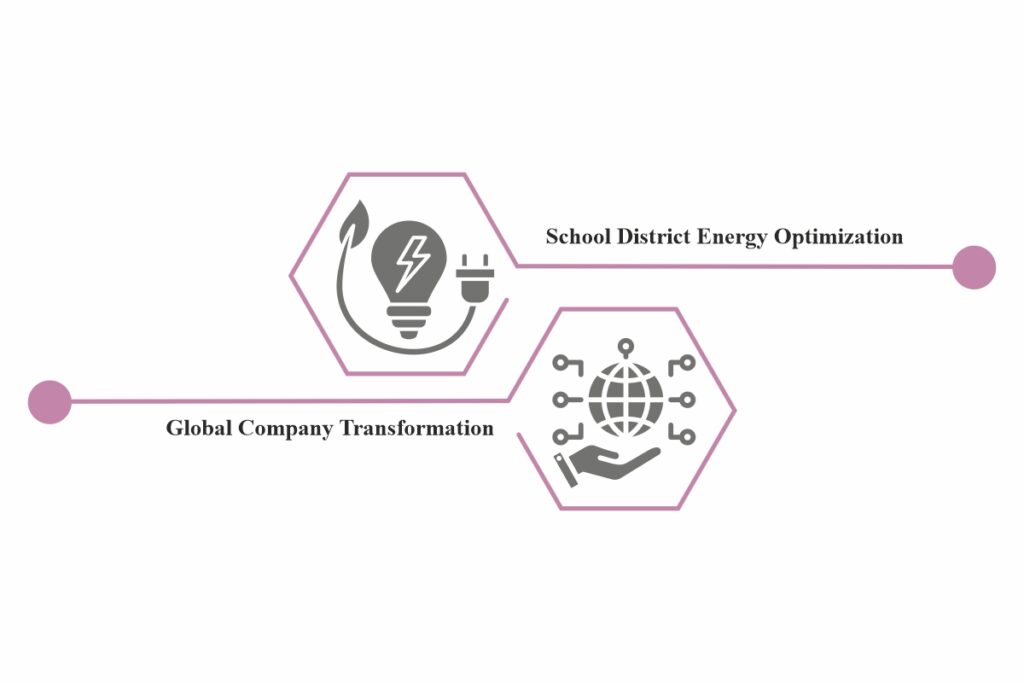
- School District Energy Optimization: Applied AI to analyze energy usage data, resulting in an 11% reduction in year-over-year energy costs and promoting sustainability.
- Global Company Transformation: Used AI and data visualization to streamline business functions, cutting project timelines by 4 to 6 months and saving hundreds of thousands in salary costs.
What stands out most in James’s approach is not just the savings in time and money, but the speed of transformation. As he emphasizes, companies often achieve more in a shorter amount of time than they initially thought possible, demonstrating how quickly AI can drive change and deliver impactful results.
Role of Data Security in AI Implementation
James Nicholas Kinney highlights that data security and privacy are paramount when implementing AI solutions. He believes the ethical collection of data, along with clear opt-in forms and first-party data, is essential for ensuring individuals understand how their data will be used. This transparency is crucial for fostering trust in AI systems. The human aspect of AI, as much as the technology itself, ensures that solutions are applied responsibly and beneficially.
Governments have played a leading role, introducing regulations like California’s CCPA and the EU’s GDPR to set standards for data privacy and security. For James, the core principle is simple: people are more likely to support AI initiatives when they are informed about the data they provide and its usage. Providing clarity on the purpose and functionality of AI models helps foster a better understanding of the technology, making people more comfortable with its application.
The AI Implementation Process
The process begins with a thorough discovery session and readiness assessment to understand the organization’s objectives, risk tolerance, and other key factors. James always recommends starting with a small-scale project to address a specific challenge before expanding. For instance, the focus might initially be on solving one problem within a single team or department. This focused approach ensures that the organization achieves quick wins and measurable ROI before scaling up the AI initiatives across other areas. By starting small, James minimizes risk, demonstrates the value of AI early on, and builds momentum for broader adoption.
The Future of AI
Over the next 3 to 5 years, much of the conversation around AI will focus on generative AI, which is undoubtedly an exciting development. However, James Nicholas Kinney believes that the true transformation will come from the adoption of enterprise AI. He predicts that enterprise AI has the potential to revolutionize businesses and governments, driving significant improvements in efficiency, decision-making, and organizational structure.
By leveraging AI, organizations will move away from manual, siloed processes and outdated systems, paving the way for smarter, more agile operations. This shift is not just about increasing profitability but also about enhancing the workplace experience for employees. Enterprise AI can streamline workflows, reduce bottlenecks, and enable more collaborative environments, leading to a more dynamic and productive organizational culture. James envisions a future where AI is a tool for growth and a key driver of positive change across industries and sectors.
Harmonizing People, Culture, and Technology
James Nicholas Kinney doesn’t create the technology himself but focuses on harmonizing people, culture, tools, and technologies to achieve the client’s goals. He doesn’t favor any specific company or vendor. Instead, his role is to advise clients on what’s possible with AI and guide them on how to implement it. He enjoys collaborating with internal leaders like CIOs, CTOs, CEOs, and CFOs, as well as working with tech partners such as AWS and Nvidia.
AI Precursor Technologies for Business
At the enterprise level, James integrates a mix of AI precursor technologies and renowned platforms to drive impactful results. His approach is technical and strategic, ensuring efficient use of cutting-edge tools for various business needs.
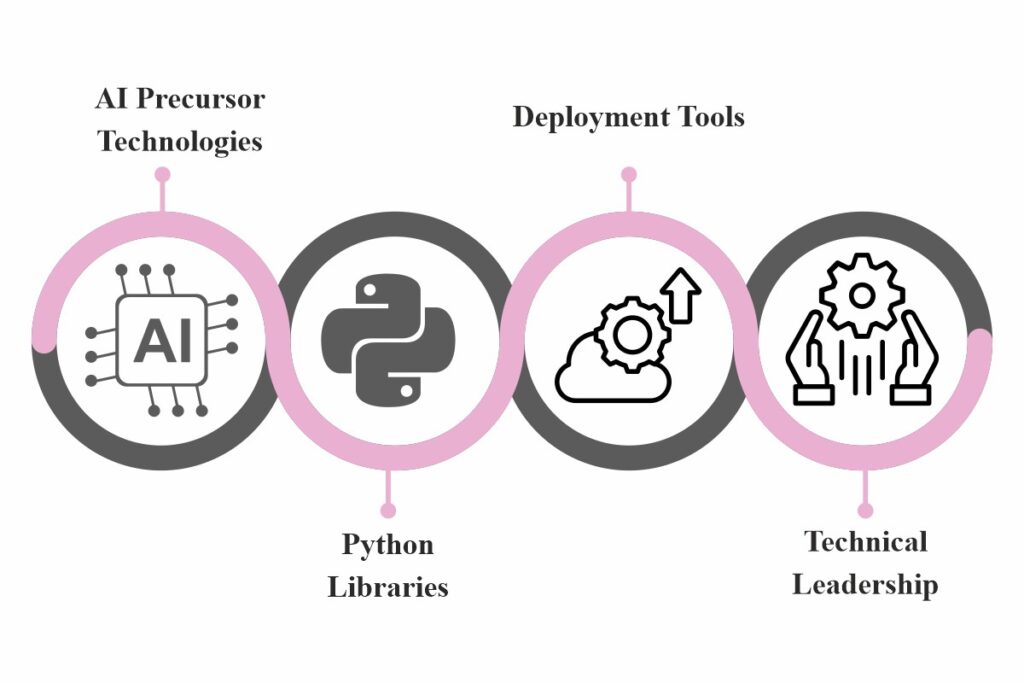
- AI Precursor Technologies: Utilizes foundational technologies that set the stage for advanced AI applications.
- Python Libraries: Leverages Python for deep quantitative analysis and extracting insights from unstructured data.
- Deployment Tools: Uses OpenAI Enterprise, Gemini 2, and Azure Studio for effective deployment and API calls.
- Technical Leadership: Leads technical teams with a focus on extracting actionable insights and driving innovation using AI.
Rise of the Global Chief AI Officer or CXO
James envisions a future where every company has a CAIO. He believes that they will become the hybrid executives of the future, combining expertise across multiple business functions such as finance, operations, marketing, manufacturing, and services. According to James, these leaders will be instrumental in bridging the gap between various departments within an organization, ensuring seamless collaboration and aligning AI strategies with broader business goals. This integrated approach, he believes, will drive innovation and efficiency across the entire company, positioning the CAIO as a key figure in shaping the future of business operations.
Power of Observability in AI
The mission and vision of James can be summed up in one word: Observability. He emphasizes the importance of transparency and clarity in AI systems, ensuring that organizations can leverage AI effectively and understand how it operates and evolves within their business. By focusing on observability, James strives to create AI solutions that are powerful and accountable, allowing businesses to track, measure, and improve their AI-driven processes with confidence.
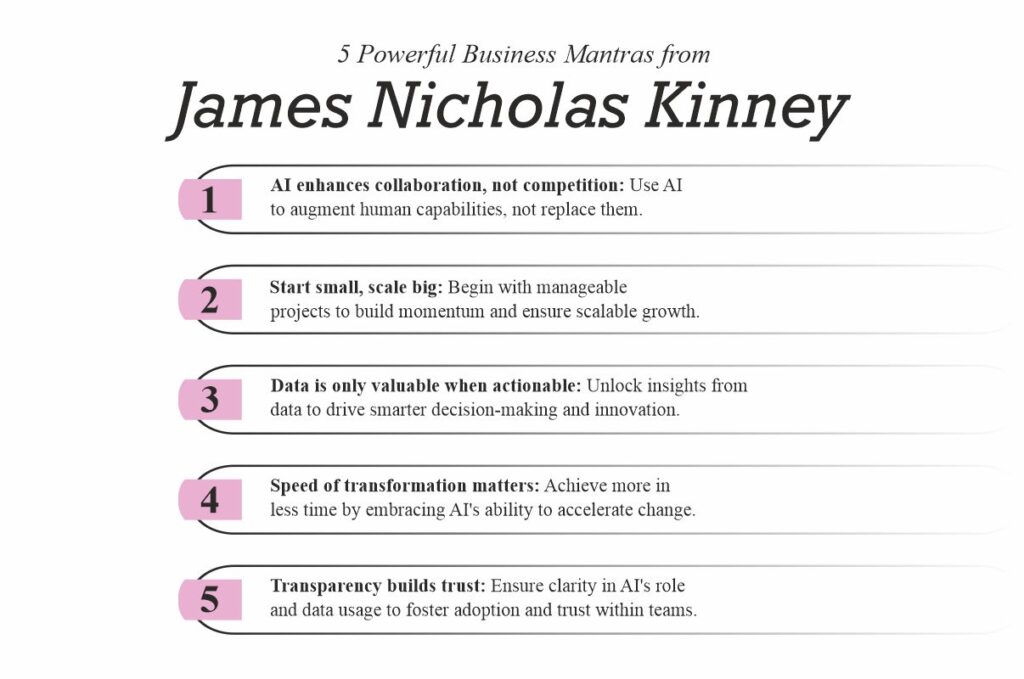
5 Powerful Business Mantras from James Nicholas Kinney
- AI enhances collaboration, not competition: Use AI to augment human capabilities, not replace them.
- Start small, scale big: Begin with manageable projects to build momentum and ensure scalable growth.
- Data is only valuable when actionable: Unlock insights from data to drive smarter decision-making and innovation.
- Speed of transformation matters: Achieve more in less time by embracing AI’s ability to accelerate change.
- Transparency builds trust: Ensure clarity in AI’s role and data usage to foster adoption and trust within teams.
